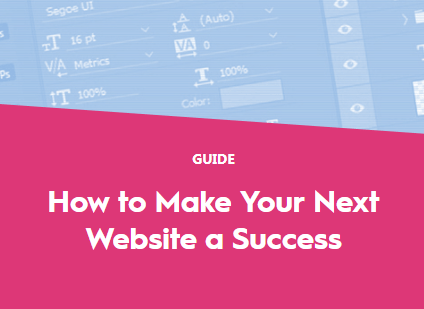As Business Development Manager at a Digital Marketing Agency delivering UX Design & Build Projects (as well as Strategic Digital Marketing Campaigns), I’m acutely aware that I’m often the first interaction with our clients. And, as we all know, first impressions count – a heavy burden indeed with almost 50 mouths to feed back in the office.
Focusing on User Experience (UX) Website Design and Build, I think that it’s fair to say in the past few years more and more of our prospects want to take a consultative approach to their next website. Gone are the days of putting a designer in front of a screen to create the new website look and feel, and launching without any real ideal of how it’s likely to perform and how it will support both business and user needs.

We’ve come a long way (if you want more information about planning your next website – download one of our free guides on the subject), but with that comes a greater understanding and expectation on the part of our clients – and as that first impression of Coast Digital I need to make sure we match up.
Without giving away too many secrets of our success, how do we go about doing that at Coast Digital?
How We Approach UX Research from Day One
The key is to build a relationship by demonstrating empathy, expertise, and problem-solving capabilities – it’s not one size fits all. Each client has a different need, or challenge, and while in most instances we will begin a project with a research phase, we need to quickly take stock of the situation and understand the specifics of a project:
- What type and quality of research already exists?
- How recent is it?
- How did it come about?
- What can we learn from the existing site?
- Who is the competition and how do they match up?
- What tracking existing on the site (and can we get access)?
- Google Analytics
- Search Console
- HotJar/Crazy Egg
This is not an exhaustive list, but in asking these, and other similar questions we can quickly start to shape a project approach that the prospect can see will address their needs.

A word of caution here as I have used the word ‘quickly’; clients all want to see progress. However, it is important not to trivialise their challenge – even if you’ve seen it 100 times before, it’s potentially a big deal to your prospect.
There is a line to tread whereby you inspire confidence in your approach and experience (they want to know that you can help them), but they also don’t want think that you’ve not taken their big issue seriously or worse, make them feel that they got it wrong! If they have got it wrong then the job becomes even more tricky as they need to be educated, enabling them to arrive at the same conclusion. If you are pitching something they don’t think aligns with their needs that’s an uphill struggle.
Why Your UX Approach Needs to be Bespoke
As with any good UX approach, make sure you know your audience, what are their needs and challenges, and how can you tailor your approach, proposals and pitch material to specifically address them. If you sell to pitch a one size fits all approach in this more mature market, you’ll soon start to miss out.
Find Out About How We Approach Website Projects
We consider the UX research stage a vital part of a successful website project – it informs everything that comes after and ensures an end result fit for purpose.
Want to know more about how we approach website projects, from the UX stage onwards? Download our free guide – How to Make Your Next Website a Success.

